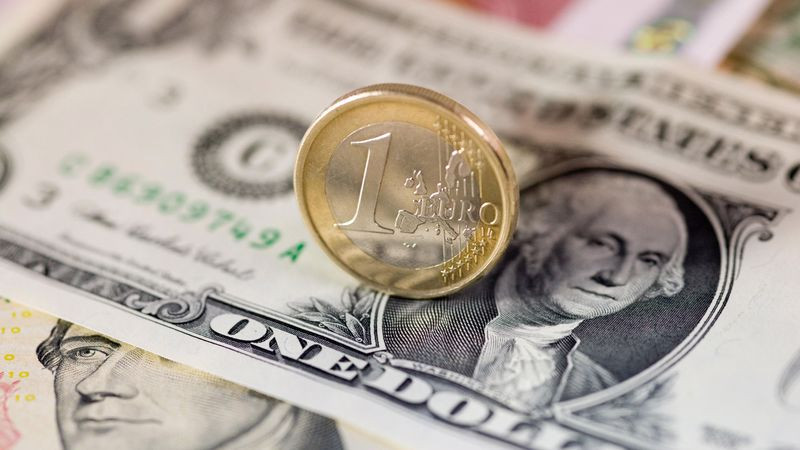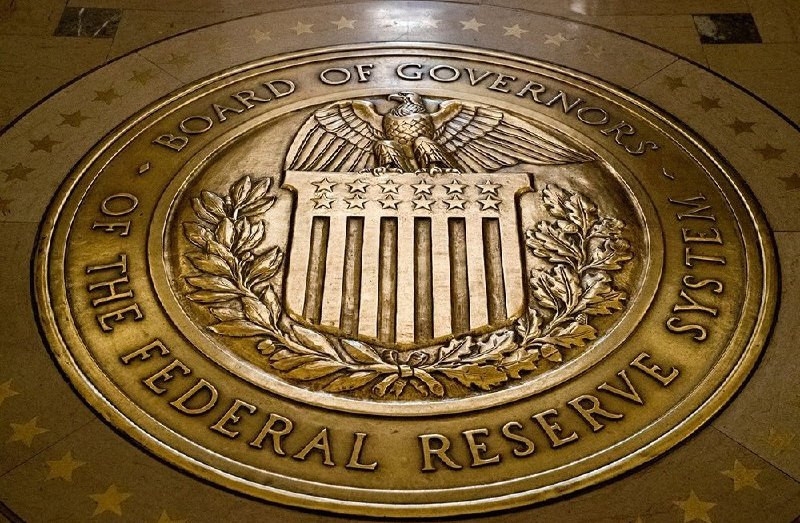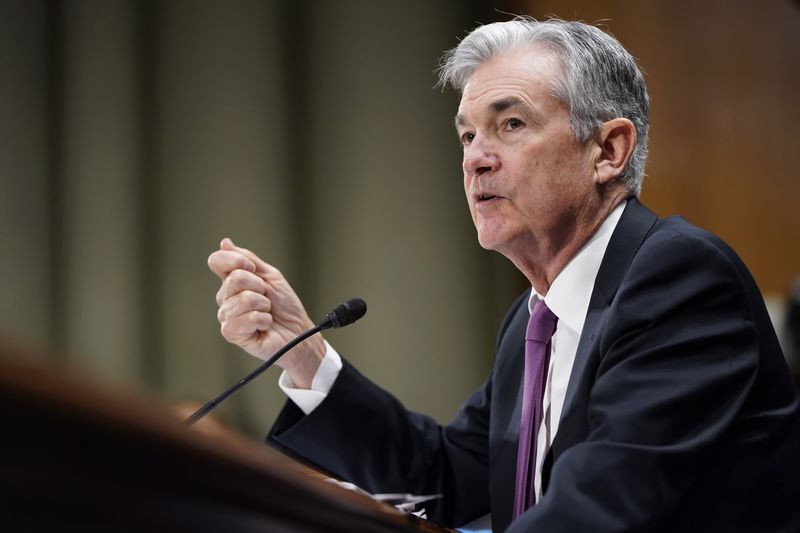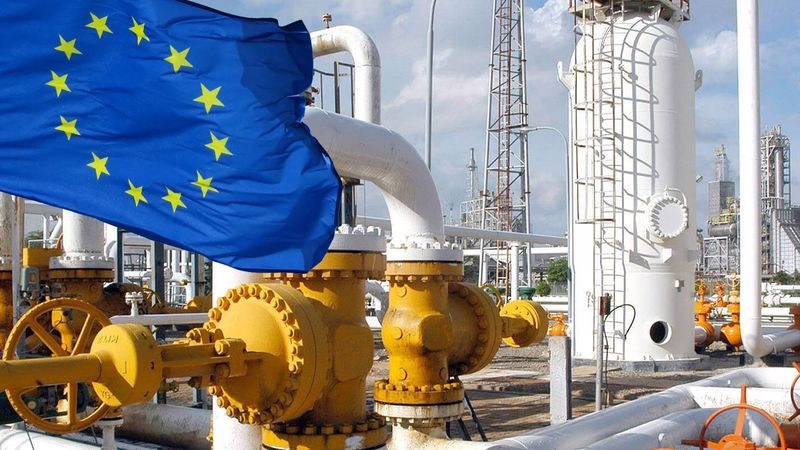
Following the results of the last five days, the euro fell against the US dollar by about 0.7% and closed in the red for the second week in a row.
The EUR/USD pair has declined by more than 2% since the beginning of August, and has lost about 12% since the beginning of the year.
The single currency has updated the lows of almost 20 years ago, having plunged below parity with the dollar twice in the summer, as the energy crisis broke out in Europe, and gas and electricity prices soared to historic heights.
On the last trading day of last week, August 26, the estimated price of gas futures for September delivery (TTF) was $3507.3 per thousand cubic meters, which was a record value for the entire operation of gas hubs in Europe – since 1996. The indicator for the week increased by about $1,000, or almost 40%.
Meanwhile, the average wholesale price of electricity in a number of EU countries exceeded €600 per megawatt-hour, and in some places it again crossed the mark of €700 per megawatt-hour.
"The euro is a victim of the European energy shock," TD Securities reported.
"In the coming weeks, the fate of the euro will be inextricably linked with the fate of Nord Stream-1," the bank's strategists believe.
They opened a short position on the euro when the single currency was trading at $1.0345 paired with the dollar, and recorded a profit when the exchange rate fell below parity.
"It is possible that the euro will still fall in price, since its short-term prospects do not look the best," TD Securities noted.
According to Morgan Stanley analysts, the growth of short positions on EUR reflects the role of the dollar as a safe haven during the storm, as well as the fact that the United States is less affected by the gas crisis.
The bank predicts that the euro will fall to $0.97 this quarter, a level not seen since the early 2000s.
Investors' confidence in the further weakening of the euro is growing, the number of net open positions for short positions on the euro has reached its highest since the beginning of the COVID-19 pandemic, the Financial Times newspaper reports.
The number of net open positions for shorts on euros for the week up to and including August 23 amounted to 44.1 thousand compared to 42.8 thousand a week earlier, according to data from the American Commodity Futures Trading Commission (CFTC), released on Friday.
The last time investors were so pessimistic about the euro was two years ago, when the coronavirus pandemic hit Europe.
The growing number of short positions on the euro also reflects a bullish attitude towards the US dollar. The US currency is supported by the aggressive policy of the Federal Reserve.

As in mid-July, when the single currency fell below parity with the greenback for the first time over the summer, expectations for another major Fed rate hike grew last week.
If on Monday the money markets indicated a 47.5% probability of another increase in the federal funds rate by 75 basis points on September 21, then on Friday the chances of such an outcome were 60.5%.
Traders were looking forward to Friday's speech by Fed Chairman Jerome Powell at the annual economic conference in Jackson Hole, hoping to get hints from him on plans for a rate hike.
However, Powell refrained from hinting at the size of the September rate hike. He only said that the central bank will continue to monitor incoming data before deciding on the next step in policy.
At the same time, Powell tried to destroy any investors' hopes that further tightening of the Fed's policy would be less aggressive, saying that restoring price stability requires tough actions from the central bank.
The latest data showed a slight decrease in inflation: The price index for personal consumer spending, which is closely monitored by the Fed, fell in July to 6.3% year-on-year from 6.8% in June. Inflation expectations based on the University of Michigan figures also declined.
"Good data for one month is far from the result that the FOMC needs to see before being sure that inflation is moving down. We must continue in the same spirit until the work is done," said Powell.
According to him, investors should not expect that the central bank will quickly wind down its monetary policy until the inflation problem is solved.
"The Fed will raise rates as high as necessary to limit growth, and will keep them at this level for some time to reduce inflation, which is more than three times higher than the Fed's 2% target," said Powell.
"Powell's message was strong and correct. I think we will have to raise short-term interest rates above 4% and will probably need to keep them there next year," said Cleveland Fed President Loretta Mester.
"Traders were waiting for Powell to make harsh statements, but when they heard them, they reacted negatively. It seems that they naively hoped for the possibility of changing Powell's opinion, and he instead toughened up the rhetoric," analysts at State Street Global Advisors reported.
After Powell's remarks, money markets increased bets on a third consecutive rate hike by 75 basis points at the Fed meeting on September 20-21 and put into quotes expectations that by March next year the rate will reach the range of 3.75%-4.00%.
"The game with assessing the Fed's forecasts has switched from guessing how high the rate can be at the peak value to understanding how long it can stay like this," Maybank strategists noted.

Powell's hawkish comments helped the greenback shrug off recent losses and gain bullish momentum, while the EUR/USD pair was under bearish pressure. The euro fell in price against the US dollar by about 0.13%, finishing around $0.9960.
The single currency reached a weekly high above 1.0070 on Friday, but was unable to hold its positions and closed near the lowest levels since December 2002.
The EUR/USD pair lost more than 70 points following the results of the last five days.
All other things being equal, the strengthening of the dollar helps the Fed to reduce price pressure by reducing import costs and tightening financial conditions, which is Powell's goal and his colleagues, as they try to return the highest inflation in 40 years to the target of 2%.
"The strengthening of the greenback is a side benefit of the Fed's policy and at the same time an indirect benefit for it," Dynamic Economic Strategy believes.
This year, the USD has gained more than 13% in weight, recording the largest increase in a calendar year since 1984 and the third largest since the dollar's peg to gold was abolished in 1971.
FOMC officials have already made it clear that they are calm about the strong dollar.
"The Fed will be ready to maintain this growth, they have no incentive to stop it. The strengthening of the dollar does not harm, and perhaps helps them," Jefferies analysts say.
According to the bank's estimates, a 10% increase in USD is equivalent to an increase in the federal funds interest rate by about 75 bps.
According to Societe Generale calculations, a 10% jump in the dollar exchange rate will lead to a decrease in consumer inflation in the United States by 0.5% during the year.
Meanwhile, a weak euro, according to experts, carries more risks than advantages.
"The bottom line is that the weakening of the euro carries more risks than opportunities for the eurozone. We do not deny that the weakening of the single currency makes exports from the eurozone more attractive and competitive, but the current situation is more complicated," said strategists at DZ Bank.
"European stocks are trading at a significant 30% discount to U.S. stocks, reflecting these risks and the greater weight of the market in sectors such as energy and finance," JPMorgan Private Bank analysts said.
Over the weekend, several European Central Bank officials expressed concern about the euro's decline and its potential negative impact on inflation.
"Of course, we are monitoring the exchange rate," said ECB representative Olli Rehn and noted that it is already an important factor in determining monetary policy.
One of the risks for investors betting against the euro now is that the outflow of money from Europe to the United States and other regions may reverse in the next six to twelve months, as the ECB begins to raise rates, which should increase the appeal of European bonds.
However, Rabobank analysts note that traders ignore the expected rate hike and instead focus on the gloomy economic prospects of the eurozone.
"The market is afraid that we are not talking about one difficult winter, the crisis may drag on for a couple of years, or even more. The euro will not get an incentive to grow, despite the fact that the market is waiting for a rate hike," they said.

Wells Fargo analysts believe that the euro will remain under downward pressure.
"We are still waiting for a further decline in the euro. Given the disruptions in energy supplies, the early recession in the eurozone and the relatively limited cycle of monetary policy tightening by the ECB, we expect the EUR/USD rate to fall to 0.9600 or lower," they said.
The main currency pair once again rolled back on Monday, failing to gain a foothold above parity.
A move above 1.00 will be difficult to maintain, say strategists at Brown Brothers Harriman, who believe that the single currency remains on track to test the September 2002 low around $0.9615.
"Germany, Italy, and now France are reducing production volumes, and this will only worsen this autumn/winter, when the shortage of energy resources becomes really noticeable. Of course, the US also faces the risk of recession, but we still believe that Europe is in a much weaker fundamental form," they said.
The continued sharp rise in gas prices in Europe has prompted market participants to assume that the ECB will further tighten measures. However, the risks of economic growth will put pressure on the euro, analysts at MUFG Bank believe.
"If the EUR/USD pair continues to decline (which we expect in the coming months), it will most likely be due to natural gas, which will lead to lower expectations of GDP growth, and in these conditions the ECB will be able to do little to influence the exchange rate," they noted.
"Based on the current macro risks associated with the energy crisis in Europe, we still believe that the ECB will not be able to raise rates against the Fed. A blow to growth in Europe is likely to undermine opportunities for tightening, even despite the further depreciation of the euro," MUFG Bank added.
Inflation data for the eurozone, which will be released on Wednesday, may support the euro, but it will be limited, according to economists at Commerzbank.
According to forecasts, annual inflation in the currency bloc reached a record 9% in August.
"The ECB's talk is more or less irrelevant to the market. Actions will be required here to support the euro. We would even doubt that a further 75 bps rate hike in September would be enough to convince the market. Eurozone inflation data in the coming days is likely to illustrate how much the ECB still needs to do to convince the market. If the euro could strengthen significantly in response to unexpectedly high data, it would be a sign that the market still expects a fairly strong reaction from central bankers. However, it is more likely that the data will provide only limited support for the euro," Commerzbank said.
The initial resistance for EUR/USD is located at 1.0030 and then at 1.0080 and 1.0120.
On the other hand, the nearest support is at 0.9980, followed by 0.9940 and 0.9890.





















